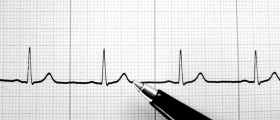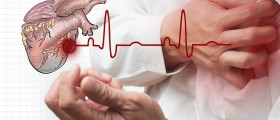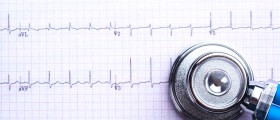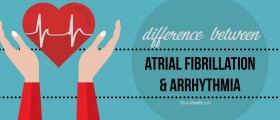
The human heart is made of special cardiac muscle cells. The organ serves the purpose of pumping the blood to practically all cells in the body. It is a strong and powerful muscle that keeps us alive. Still, as it is the case with any other organ in the body, the heart can be affected by various conditions which may only temporarily or even permanently change the structure or the function of the organ. Today, thanks to many medical advancements we can confirm heart diseases easily and initiate treatment almost instantly.
Electrocardiogram Test for Heart Disorders
The heart acts in a special way. Namely, the muscle contractions of the ventricles and artia occur thanks to well organized flow of electrical impulses all of which originate from the sinoatrial node. This is the main leader and generator of electrical impulses which generates impulses slightly faster than other parts of the heart. In case the sinoatrial node loses its ability to generate impulses, other parts of the heart take over the pacemaker function.
Now, since there is electrical activity involved in the entire process of heart contractions, scientists managed to discover the way to record such activity and study it carefully. Namely, if certain number of leads is placed on the specific spots on the chest area and on the extremities of the tested individuals electrical activity of the heart can be easily recorder. This is done during electrocardiogram (EKG).
EKG is an amazing and rather simple test, performed within short period of time but revealing a plenty of vital information regarding the current state of the heart and the presence/absence of some structural/functional abnormalities.
For instance, EKG determines the underlying rate and rhythm mechanisms, the orientation of the heart inside the chest cavity and confirms/rules out the presence of increased thickness of the heart muscle (hypertrophy).
What is more, the test reveals damage to various parts of the heart which are generally seen in case of myocardial infarction. As a matter of fact the test is so precise that it can detect the introduction into the heart attack and easily differentiate the acute myocardial infarction from lesions that have developed earlier but have not been accompanied by any symptoms or signs.
In the end, EKG plays significant role in evaluation of patterns of abnormal electrical activity that puts patients at risk of different arrhythmias.
How is EKG Performed?
The simplicity of the test and the device used makes EKG cheap and available to practically all doctors, starting from general practitioners to various medical specialists working in hospitals.
Today, EKG is performed as a part of a routine examination and may be a suitable way of screening evaluation. EKG is also a part of a cardiac exercise stress test and a powerful tool used in each and every case when people experience chest pain accompanied by shortness of breath, dizziness and palpitations (symptoms of heart attack). The test is additionally indicated as a part of preoperative evaluation, especially if patients are old and the heart condition may be present but not confirmed yet.
The test is relatively simple. Patients are supposed to lie down on the table and they should remove the clothes from the upper part of their body and also remove socks or similar that prevents the leads from coming into the direct contact with their ankles. There are several leads, some of which are attached to the patient’s chest (6 leads), in a specific order, and others are connected to the wrists and ankles. Once this is achieved, patients are told to breathe normally, not to move and within a few minutes the results are recorded on a piece of paper and are ready to be analyzed.
In spite of all its advantages EKG also has some limitations. First of all, the test might not be suitable for detection of some severe underlying heart conditions in case performed when patients are symptom-free. The example would be ischemic heart disease which can be detected with EKG once the symptoms occur. The test shows no abnormalities when there are no symptoms but the results are quite different if EKG is recorded during an exercise stress test.
Another limitation of EKG is connected to its inability to sometimes differentiate conditions because they show the same changes during the test. Further, detailed examination and additional cardiac tests will reveal the exact underlying disease.
And finally, even though one may be suffering from certain heart condition, his/her EKG may be of completely normal appearance. There is no clear explanation for this occurrence.
Still, in spite of the previously mentioned limitations, EKG remains one of the mostly used tests in evaluation of heart function, especially when prompt medical attention is required. The value of the test is priceless and the very device can quickly provide with information regarding the malfunction of the heart. As a result treatment starts almost instantly and may save patients lives.
















Your thoughts on this
Loading...